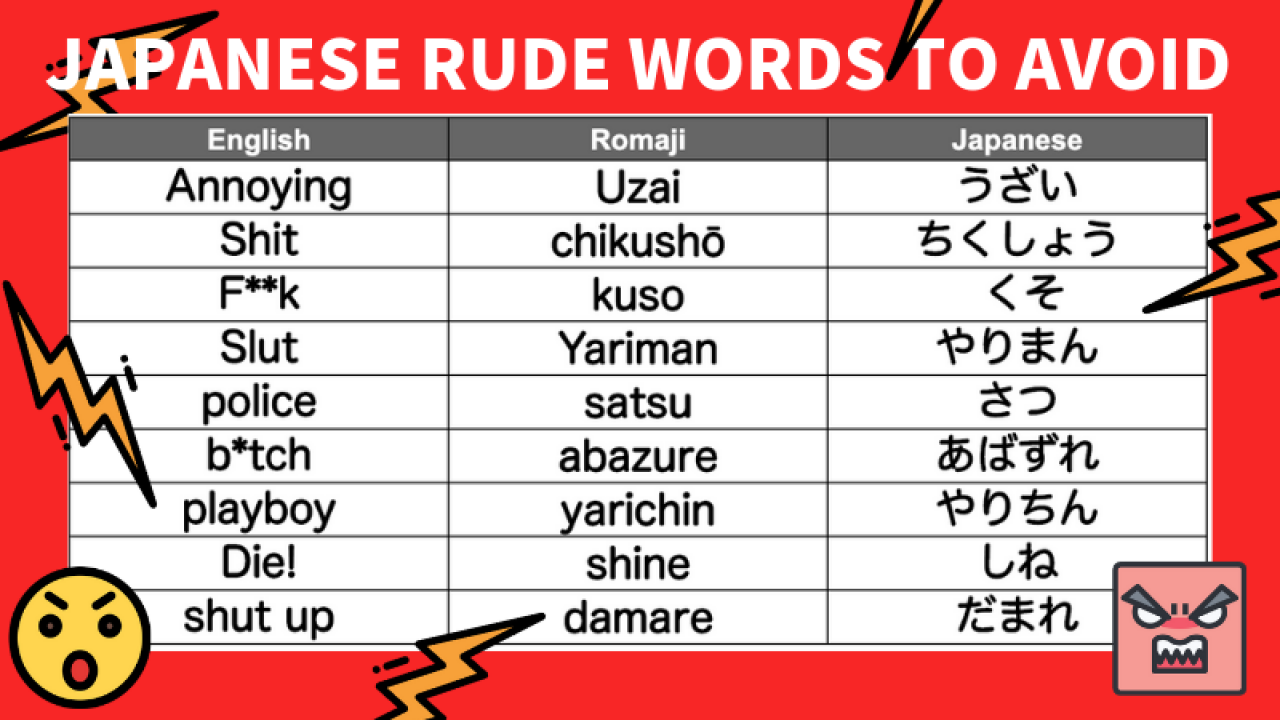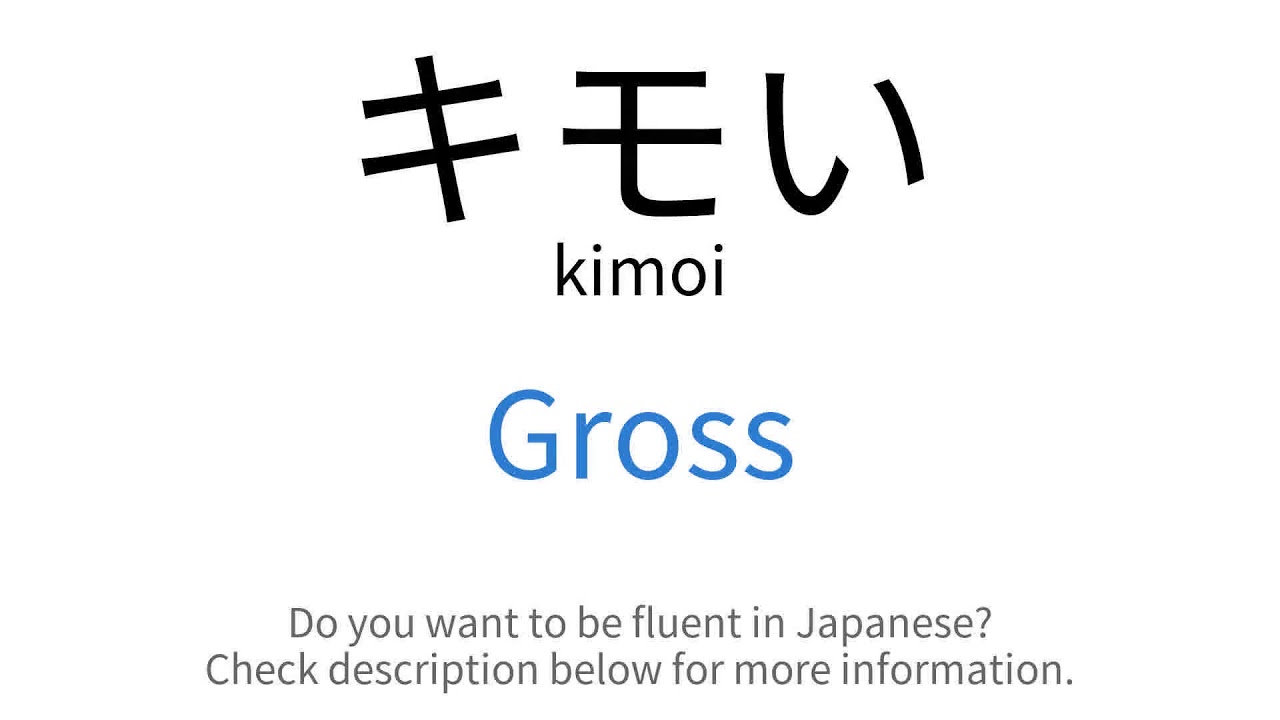Hej Studencie! Ready to tackle "gross" in Japanese? Let's get started!
Basic Ways to Say "Gross"
We'll start with the fundamentals. Think of this as your vocabulary foundation.
Kimoi (キモい)
This is super common! It's slangy and often used by younger people. Pronounced "kee-moy".
It means "gross," "creepy," or "disgusting." Imagine finding a bug in your food. Kimoi!
Important: Be careful when using this. It's quite direct. It's often used among friends.
Example: Ano hito, nanka kimoi. (That person is kind of creepy.)
Kimochi warui (気持ち悪い)
This is a more polite version of kimoi. "Kee-mo-chee wah-roo-ee."
It literally translates to "feeling bad." But it means "gross," "unpleasant," or "sickening."
It's safe to use in most situations. You'll hear it frequently.
Example: Kore wa kimochi warui nioi ga suru. (This smells gross.)
Key Difference: Kimoi is more blunt. Kimochi warui is slightly softer.
More Nuanced Expressions
Let's expand your vocabulary! These phrases add more color to your reactions.
Ew (うわっ)
Yes, just like in English! Often used as an interjection.
Pronounced "U-wah!" Short, sweet, and universally understood.
Example: Uwa! Mushi! (Ew! A bug!)
Guroi (グロい)
This comes from the English word "grotesque." "Guro-ee".
It describes something visually gross or gruesome. Think horror movies or surgical images.
Example: Sono eiga wa chotto guroi. (That movie is a little grotesque.)
Caution: This is a strong word. Use it appropriately.
Daraku (堕落)
This term refers more to moral depravity or decadence rather than purely physical disgust. "Da-ra-ku".
It can also imply something is deteriorating or going downhill. Think corruption or laziness.
Example: Kare no seikatsu wa daraku shite iru. (His life is becoming decadent.)
Expressing Disgust with Actions
Sometimes, a word isn't enough. Let's look at some body language.
Facial Expressions
A wrinkled nose. A widened eye. A slight shake of the head. These are universal signs.
Imagine you just smelled something terrible. Your face says it all!
Japanese people use similar non-verbal cues.
Sounds
A quick "eeh!" or "uhh!" can convey disgust. Think of a small gasp.
These sounds are often combined with facial expressions.
Politeness Levels
Remember, Japanese values politeness. Context matters!
Formal Situations
Avoid kimoi. It's too informal.
Kimochi warui is a safer bet. Or use indirect language.
Instead of saying "this is gross," you could say "I don't like this."
Informal Situations
Kimoi is perfectly acceptable with friends.
You can be more expressive and direct.
Practice Scenarios
Let's put your knowledge to the test!
Scenario 1: You see a cockroach in your apartment.
What do you say? You could shout, "Kimoi!" or "Uwa!"
Scenario 2: Your friend shows you a gory picture.
You might say, "Guroi!" or "Kimochi warui."
Scenario 3: You taste something awful at a restaurant.
You could politely say, "Chotto watashi ni wa aimasen." (This doesn't suit me.) Or "Kimochi warui" quietly.
Key Takeaways
Let's summarize the key points for your exam success!
- Kimoi: Slangy, direct "gross." Use with friends.
- Kimochi warui: More polite "gross" or "unpleasant." Safe in most situations.
- Uwa!: "Ew!" Universal interjection.
- Guroi: "Grotesque," visually disgusting. Use with caution.
- Daraku: Moral depravity.
- Politeness matters: Choose your words carefully based on the situation.
- Non-verbal cues: Facial expressions and sounds enhance your message.
You've got this! Keep practicing, and you'll ace the exam!
Remember to always consider context and your relationship with the person you're speaking to. Good luck!


